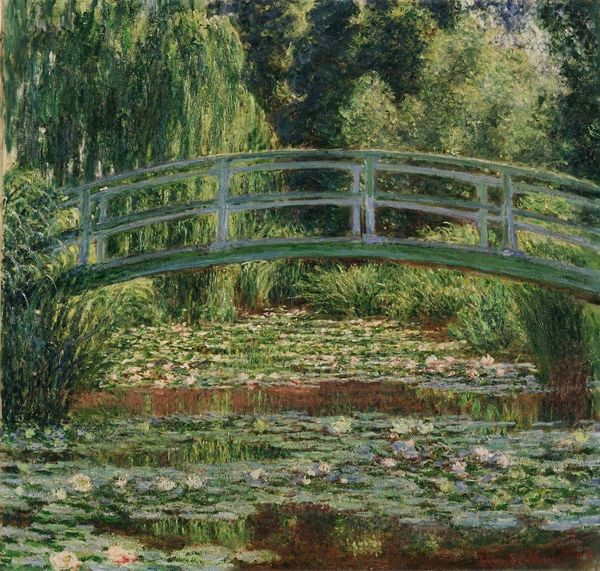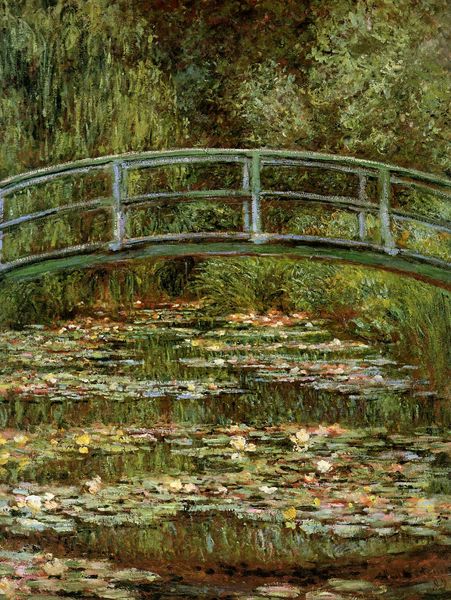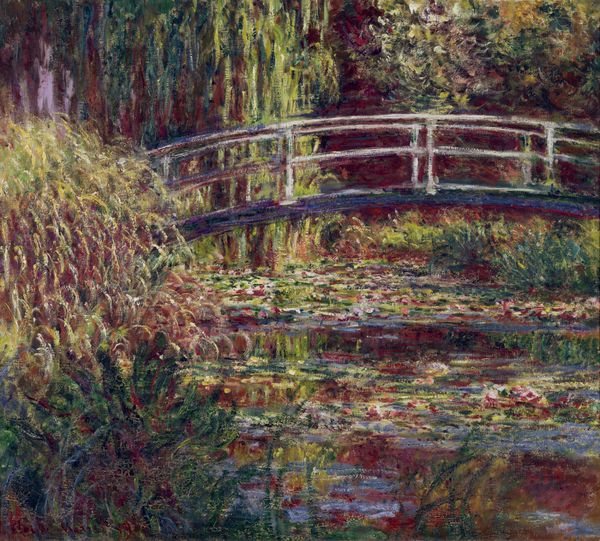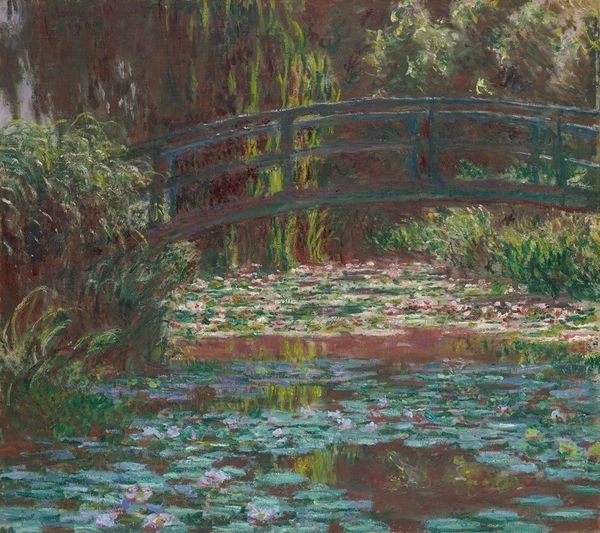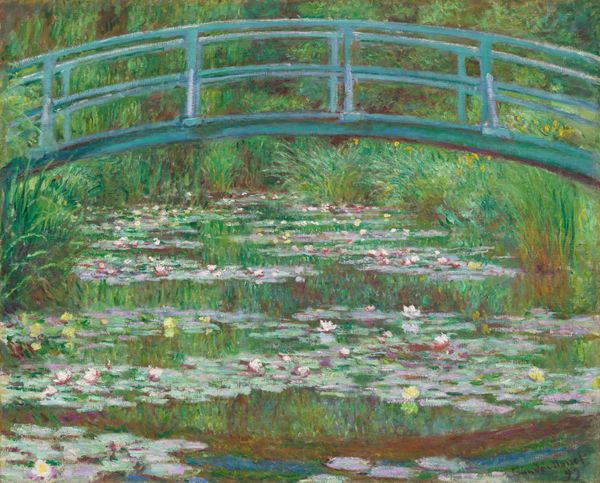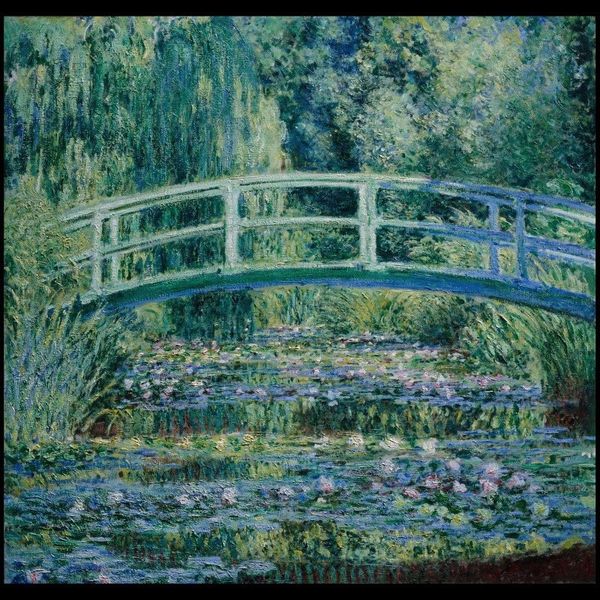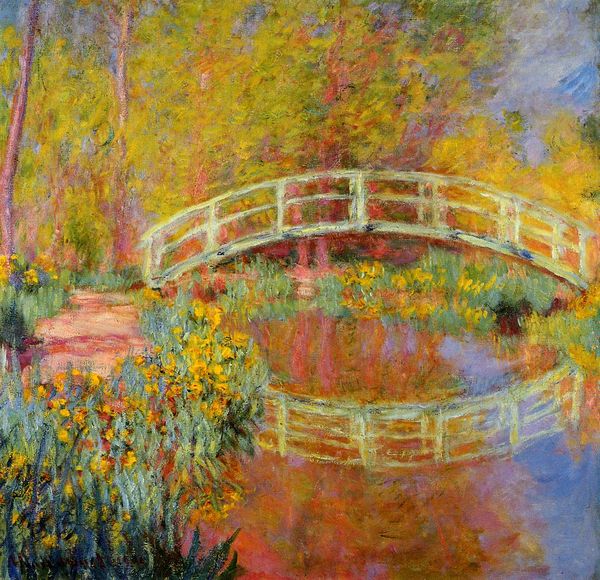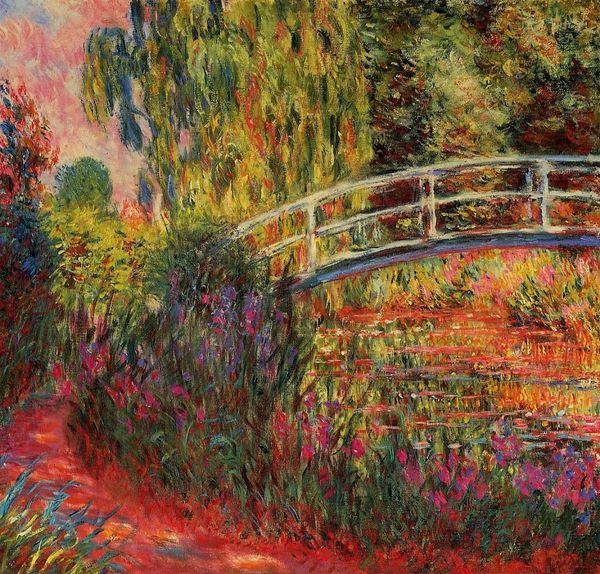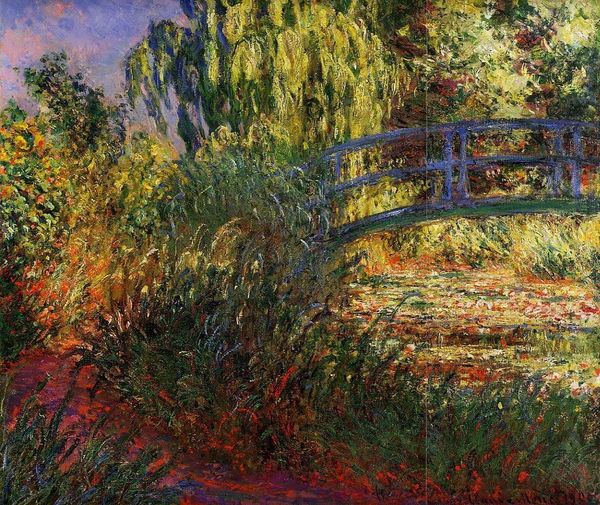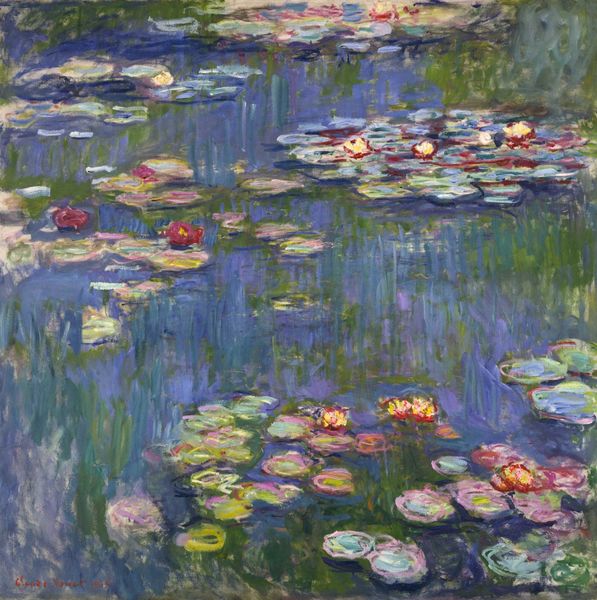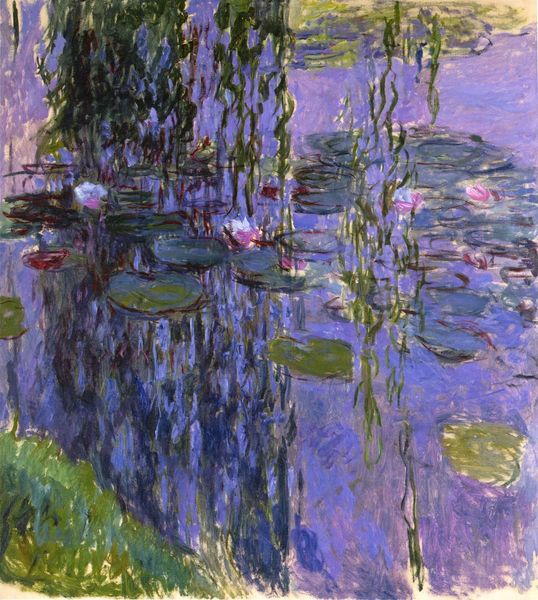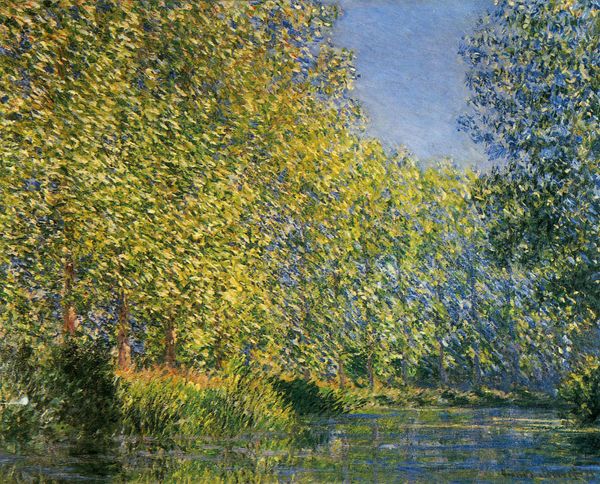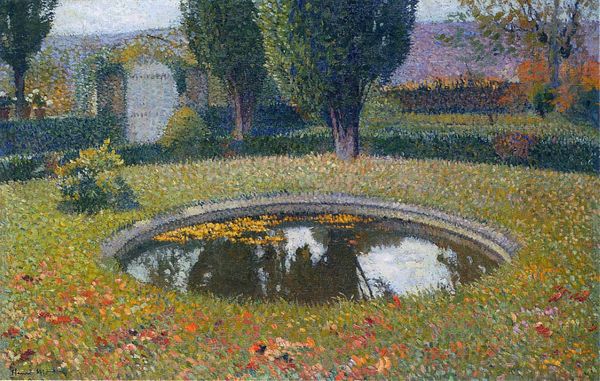
Copyright: Public domain
Claude Monet painted 'The Japanese Bridge' using oil on canvas. This work reflects France’s fascination with Japanese art and culture in the late 19th century, a period known as Japonisme. The bridge, a symbol of connection and passage, stands as an explicitly crafted, and hence artificial, element within the natural world. Monet’s inclusion of such a structure prompts us to think about the public role of art. He made it in France. Monet’s choice of subject matter points to the burgeoning consumerism of the era, where foreign goods and styles were increasingly available and desired. The water lilies themselves, cultivated in Monet’s own garden, speak to the commodification of nature and the human desire to control and curate the environment. The cultural references and historical associations woven into this image serve as rich material for art historians, especially when we consider the social conditions that shape artistic production. By examining archival materials, such as letters and exhibition reviews, one can gain a better understanding of how this art reflects the social structures of its time.
Comments
No comments
Be the first to comment and join the conversation on the ultimate creative platform.
